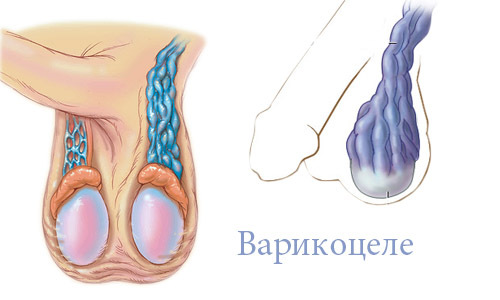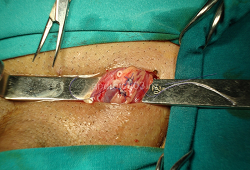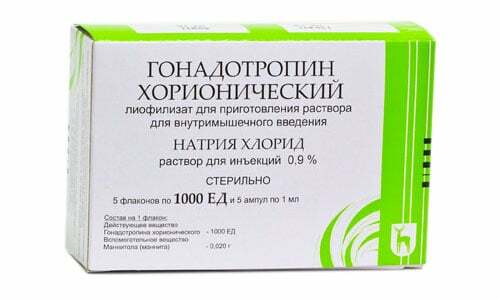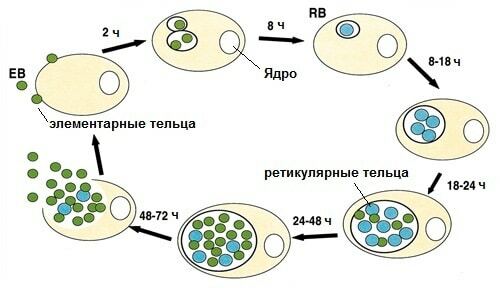Varicocele is a purely masculine pathology associated with varicose veins extending around the spermatic cord. In general, varicocele is an anatomical and clinical syndrome, which is characterized by the appearance in the scrotum of varicose veins and reflux. Since pathology often occurs secretively, most patients have no idea about the developing pathology. The disease is dangerous by lowering the functional abilities of the testicles, a violation of spermatozoon activity, infertility and men's menopause. As statistics show, about half of the cases of infertility in men are due to the available varicocele. Pathology is treated surgically, but sometimes there is a relapse varicocele. The causes of such complications are associated with preserved reflux of blood flow through the vein and other factors.

Clinical manifestations of varicocele
For such a male disease, asymptomatic, latent flow is often characteristic, therefore not always patients notice that they develop any deviations. Usually, patients learn about pathology by random examination. Depending on the stage of development, varicocele may be manifested by a slight increase in the scrotum, its swelling( usually on the left), traumatic pain in the process of walking or with exertion on the side of the affected testicle. In case of neglect of the pathology, the pain syndrome acquires a permanent character, increasing with walking, not letting go even in a lying position. In general, the pain can be blunt or aching, ranging from a slight discomfort sensation to acute soreness and burning in the affected testicle.
Warning! Relapse cases after the operation occur in 1/5 of the children and in 1/10 of the adult patients. Therefore, it is recommended to perform operative intervention after puberty, when the risks of postoperative complications and relapses are reduced.
During the day soreness can change intensity due to physical activity or heat, after a long stay in a certain position( standing or sitting), but if the patient lies down, the pain syndrome subsides. The disease is characterized by a 4-degree classification, where in the initial degree pathology can be detected only with the help of Doppler ultrasound and ultrasound. At the second degree, a pathological abnormality can be detected only in the standing position of the patient, with the third varicose palpable already in a lying posture, and at the fourth degree, the pathology is determined visually with the naked eye. In addition to pain syndrome with varicocele, testicular atrophy can be observed. In some patients, sexual disorders are found, the testicles can decrease, and on the affected side there is a certain dysplasia of the scrotum.
With the further development of varicocele, varicose veins can be identified with a single glance. Some men notice the occurrence of fertile problems when reproductive failure or infertility develops. Symptoms of varicocele include changes related to the quantitative and qualitative characteristics of spermatozoa. According to experts, with varicocele because of the widening of the veins, the temperature of the testicles increases, which negatively affects spermatogenesis. Among the rather rare signs of pathology, urologists distinguish possible formation in the scrotum of various kinds of swelling.
Possible complications of the pathology
Varicose veins of the testicular veins are not dangerous, but such a state can lead to undesirable consequences, among which testicular ischemia( or hypoxia of the testicles) is particularly distinguished, real reflux of the kidneys and adrenal glands into the testicle cavity, and free radical clusters in the testiclestissues, irritating glandular functions. All the listed complications of pathology are able in combination to cause male infertility, testicular atrophy, etc.
Since varicocele blocks blood flow, the temperature indices in the testicles increase, which affects the motor abilities of spermatozoa and their spermatogenesis. Infertility and varicocele have a very close relationship. According to observations, out of every thousand infertile men, 40% have varicocele. But after the surgical intervention, the complications described above recede.
Reasons for recurrence
 Although almost all the surgery for the elimination of pathology ends successfully, it is often noted that there is a relapse varicocele. At present, surgical treatment of pathology is carried out in four ways. This mini-operation, open operations using the techniques of Ivanissevich and Palomo, microsurgical revascularization and endoscopy. The lowest percentage of relapses( only 0.6%) is characterized by microsurgical revascularization, which indicates the reliability of this surgical technique. To reduce the risk of postoperative complications and relapses, it is necessary to perform the operation under stationary conditions. If the intervention was performed on an outpatient basis, the micro-operation may become complicated:
Although almost all the surgery for the elimination of pathology ends successfully, it is often noted that there is a relapse varicocele. At present, surgical treatment of pathology is carried out in four ways. This mini-operation, open operations using the techniques of Ivanissevich and Palomo, microsurgical revascularization and endoscopy. The lowest percentage of relapses( only 0.6%) is characterized by microsurgical revascularization, which indicates the reliability of this surgical technique. To reduce the risk of postoperative complications and relapses, it is necessary to perform the operation under stationary conditions. If the intervention was performed on an outpatient basis, the micro-operation may become complicated:
- by the ataxic atrophy, when a pathological decrease occurs and functional abnormalities of the testis;
- Gidrotsele when after the operative intervention in the scrotal membrane fluid accumulation occurs. To eliminate such a complication, a puncture should be performed or the operation restoring the lymphatic drainage is repeated.
Recurrence of varicocele may occur after laparoscopy, complicated by venous clipping, but, fortunately, this happens very rarely. The most common risk of complications and relapses is the traditional surgical intervention. The problem is that in case of an exacerbation of the varicocele around the perimeter of the testicle, a whole network of anastomoses and collateral veins develops, which differ in their small diameter. Therefore, it is impossible to conduct high-level microsurgical manipulations without using specialized instruments and equipment. Sometimes post-operative relapse of a pathology arises because of problem visualization. It happened that the surgeon wrongly bandaged the wrong veins, which as a result did not lead to the elimination of pathology.
Sometimes varicocele recurs due to the movement or dissolution of a certain substance or special device that was supposed to perform the closure of the varicose vessel. If after a surgical procedure a relapse occurs, the specialists will have to undergo a second operation, since there are no other ways of effective treatment of a second varicocele.
In general, the recurrence of pathology in adult age groups is associated with technical errors that have arisen during the intervention( insufficient length of the incision, etc.).But it is possible to prevent recurring complications by conducting an additional, more thorough examination of the patient before the operation using endoscopic instruments.
Methods for eliminating the recurrence of
Surgical ways of treating a re-varicocele are not so many. All of them usually prescribe a dressing of varicose vessels, as a result of which blood flow is redirected to healthy arteries.
Laparoscopy
Similar treatment for varicocele is carried out using a special stethoscope inserted into the abdominal cavity. Usually, such an intervention is well tolerated, since the postoperative period is characterized by a minimal pain syndrome and a short recovery period. In the first couple of weeks, sexual contact and physical activity should be avoided. According to statistics, a year later half of patients cope with infertility.
Microsurgical dressing and excision of the affected area of the vein
Such interventions are a more refined version of Ivanissevich's technique. The operation is characterized by a high percentage of the positive outcome, a low risk of postoperative consequences such as lymphostasis or dropsy. But there are operations and disadvantages - the probability of arterial damage and the high duration of the intervention are very high.
Ivanissevich's method
Perhaps the most common therapeutic technique for varicocele, but has a number of drawbacks, such as low efficiency and a high risk of complications in the form of arterial lesions or hydrocele.
Shunting
Such an intervention is based on the manufacture of a shunt, which is intended for bypass blood flow from the tissues of the testicle. And the spermatic vein is sewed into the vein of the hypogastric or ileum or into the vein on the thigh. Such interventions are of low effectiveness, because the risk of developing thrombosis in the created shunt is great.
Endovascular sclerotherapy
This intervention is of a closed nature and involves the introduction of a sclerosing agent into the varicose vein in an angiographic manner, which leads to coalescence of the venous walls. The operation can be performed at any age, but it is used quite rarely, since not all surgical X-ray equipment is available.
Percutaneous embolization of
A similar treatment for recurrent varicocele is considered to be minimally invasive and rarely leads to complications, but such intervention can cause venous scarring and blockade, blocking the blood flow in the testicles.
Microsurgical antegrade sclerotherapy
This method is combined, characterized by high efficacy( up to 97%) and minimal trauma. But surgical intervention is different in duration, in addition, the patient has an x-ray effect.
Operational techniques in general are few, but it is difficult to single out a definite one. The best are the operations that gave the maximum effect and did not cause complications and relapses after the intervention.



